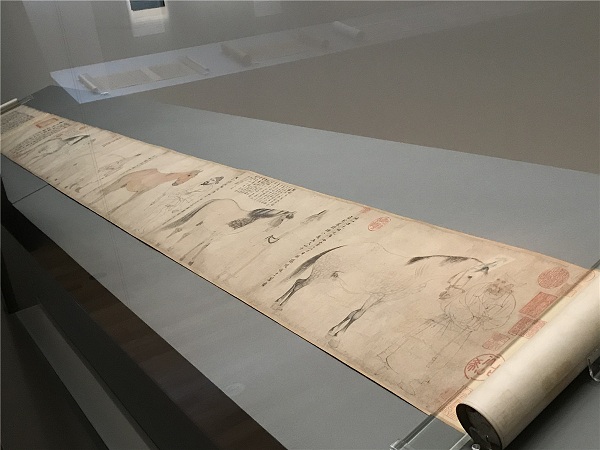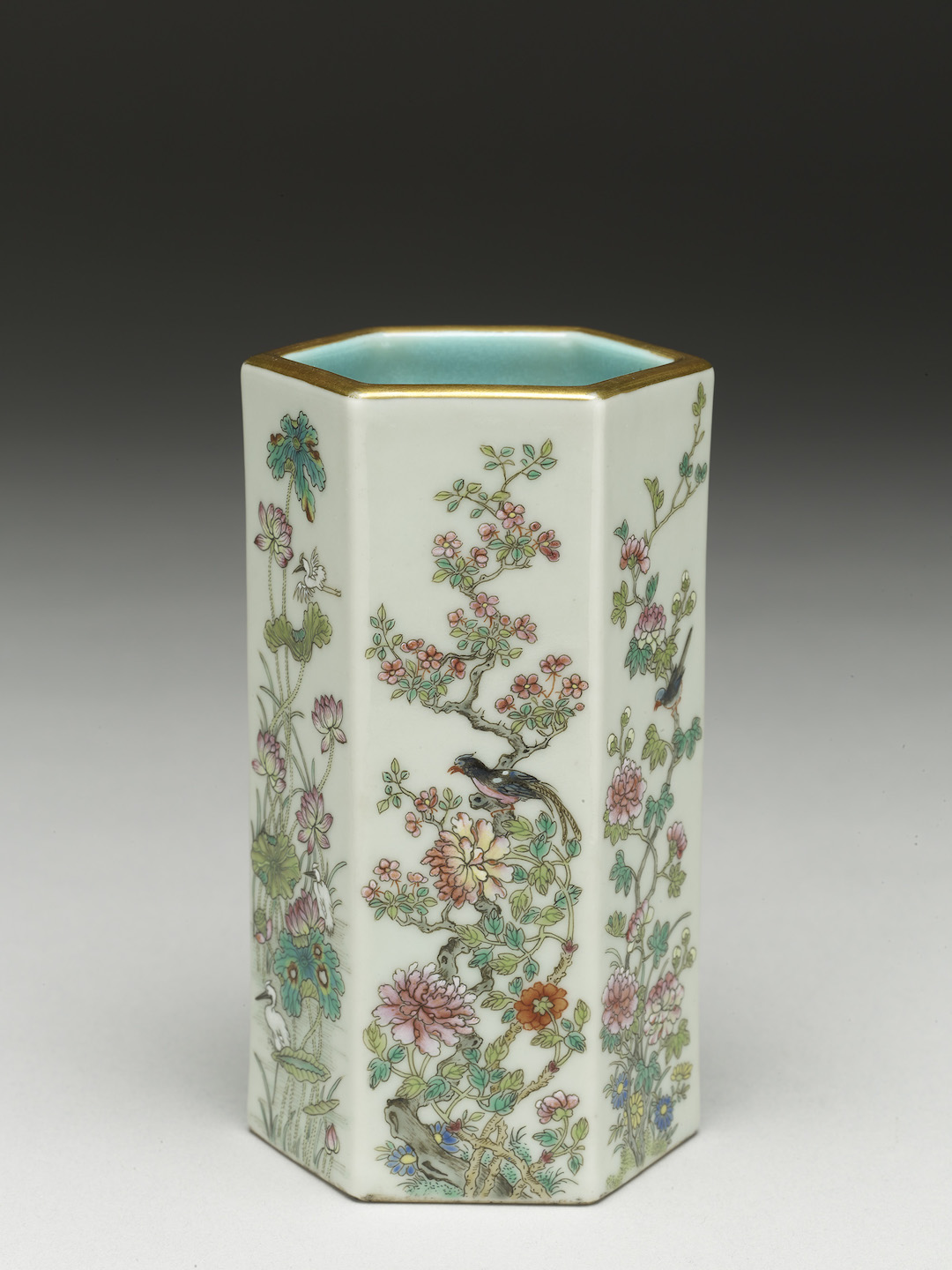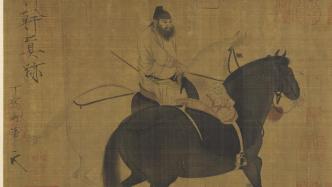
ThePaper.com has learned that the "Brush, Sing, Ink and Dance - Taipei Palace Museum Painting Guide" curated by the National Palace Museum in Taipei has recently been updated, including Han Qian's "Herding Horses" in the Tang Dynasty (national treasure), Zhao Qian's "The First Snow on the River" in the Southern Tang Dynasty in the Five Dynasties, and Song Dynasty. Forty pieces (groups) of handed down calligraphy and paintings, including "Yellow Bird on a Mulberry Branch" (national treasure), "Eight Scenes of Golden Harvest" by Wuzhen in the Yuan Dynasty, "Spring Dawn in the Han Palace" by Qiu Ying in the Ming Dynasty (national treasure), and "Sixteen Views of Painting in Seclusion" by Chen Hongshou in the Ming Dynasty are on display .
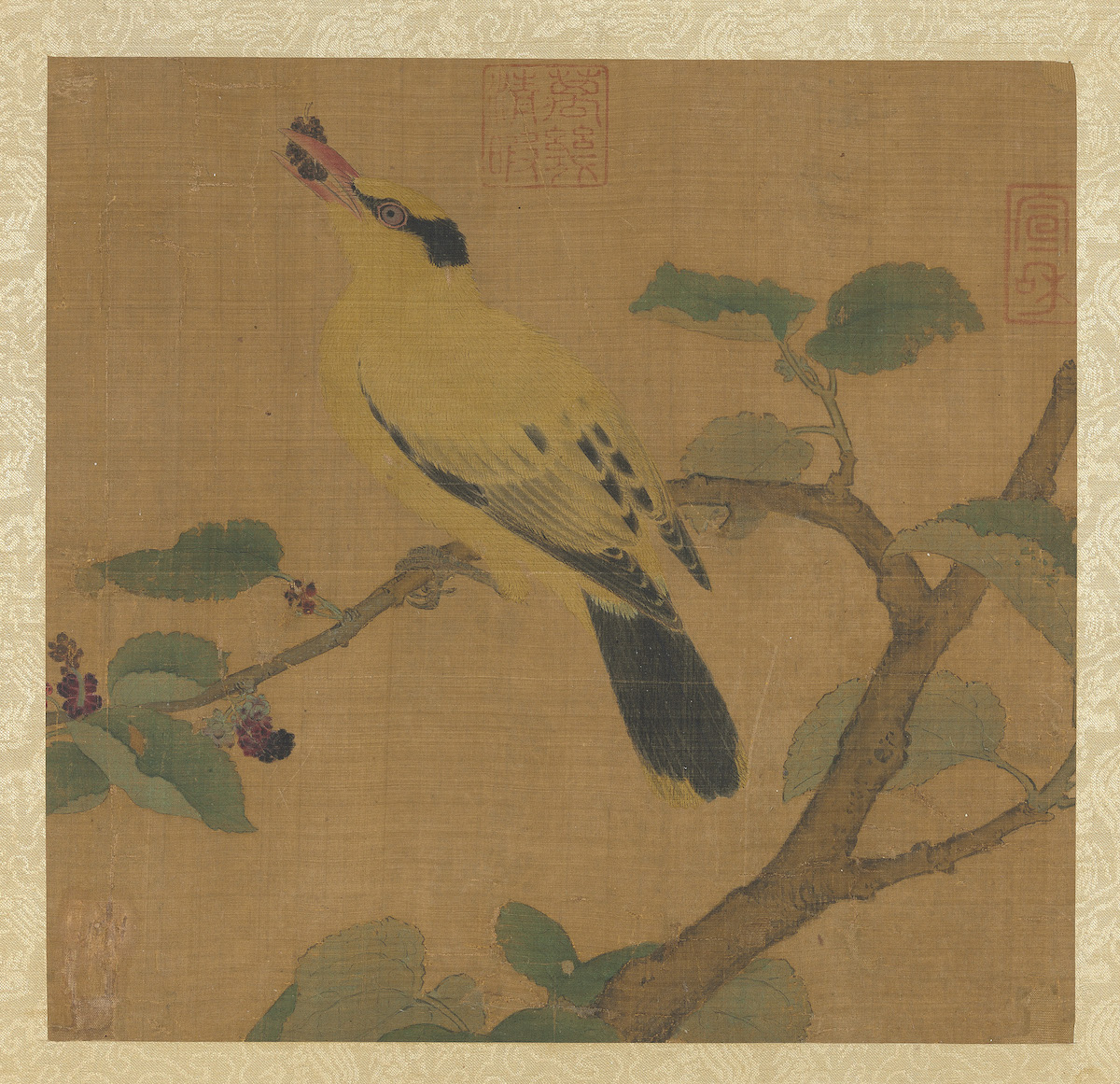
Song Dynasty mulberry branch yellow bird national treasure
The model of Chinese figure painting was gradually established by Gu Kaizhi, Wu Daozi and others from the Six Dynasties to the Tang Dynasty (222-907). The paradigm of landscape painting took shape around the Five Dynasties (907-960), and it contains the characteristics of geographical regions. For example, Jing Hao and Guan Tong painted northern landscapes, while Dong Yuan and Ju Ran painted the landscapes of Jiangnan water towns. In terms of flower and feather paintings, Huang Quan from Sichuan and Xu Xi from Jiangnan also formed two different models.
In the landscape paintings of the Song Dynasty (960-1279), Fan Kuan, Guo Xi, and Li Tang all introduced new models based on existing models and became new models. Under the initiative of the art emperors of the Song Dynasty, the Palace Painting Academy developed to an unprecedented level. Painters at that time paid attention to the observation of nature and added "poetry" to enhance the connotation and artistic conception of the painting. The interest in physical objects led to painting types that focused on mechanical structures such as buildings and ships and carriages, which jumped onto the stage of painting after the eleventh century. The emphasis on poetry led to the development of fine albums in the Southern Song Dynasty that combined calligraphy, poetry, and painting. In addition, literati in the Song Dynasty also expanded the concept of artistic expression beyond "shape resemblance", and literati painting began to become a new style.
The literati paintings of the Yuan Dynasty (1279-1368) were directed by Zhao Mengfu, the Four Great Masters of the Yuan Dynasty (Huang Gongwang, Wuzhen, Ni Zan, Wang Meng) and others, and had more diverse styles due to the retro. These styles gradually became important models in the development of painting and maintained continued influence after the Ming and Qing Dynasties.
After the Ming Dynasty (1368-1644), the styles and characteristics of different regions have become an important link in the development of art. The "Wu School" in Suzhou evolved an elegant literati style from the four great masters of the Yuan Dynasty, while the "Zhe School", which is mainly composed of Zhejiang and Fujian painters, developed from court painting and turned the Southern Song Dynasty's model into extensive ink painting. Dong Qichang of Songjiang and later Wang Shimin, Wang Jian, Wang Hui and Wang Yuanqi continued to use pen and ink to recreate nature in the "gathering" of ancient models, forming the "orthodox school" with far-reaching influence.

Ming Dynasty Qiu Yinghan Palace Chunxiao National Treasure (Part)
The emperors of the Qing Dynasty (1644-1911), while advocating the "orthodox" style, also tolerated the Western painting methods brought by European missionaries. Three-dimensional and perspective became new interpretations of ancient models. Outside the palace, in Yangzhou, a group of painters who advertised themselves as "weird and bizarre" were active in a highly commercialized market. Their words and images were aimed at "unorthodox" models, and they themselves became the paradigmatic basis for future generations to pursue change.
landscape painting
Song, Li and Tang Dajiang Floating Jade

Song, Li and Tang Dajiang Floating Jade
In the middle of the river, islands stand tall, surrounded by wind and waves on the shore, with the potential to fly. There is a dock nearby, and two river boats are docked here together.
The islands in the center of the river are very special, with trees, temples, and pagodas all in great detail. Although it was originally titled as a painting by Li Tang, its style is different from Li Tang's vigorous and hard-drawn painting, and the brushwork is close to the treatment method in Guo Xi's "Early Spring Picture". The outline of the main peak of the island has great fluctuations, which is close to Guo Xi's close-up boulders. The clean and smooth feeling of the whole painting is also close to the changing peaks and clouds in "Early Spring Picture". Therefore, it is speculated that it may be from the Xuanhe or Shaoxing period (1119) -1162) A masterpiece of the Guoxi school of painters.
Eight Scenic Spots of Jiahe in Yuanwu Town

Eight Scenic Spots of Jiahe in Yuanwu Town (Part)

Eight Scenic Spots of Jiahe in Yuanwu Town (Part)
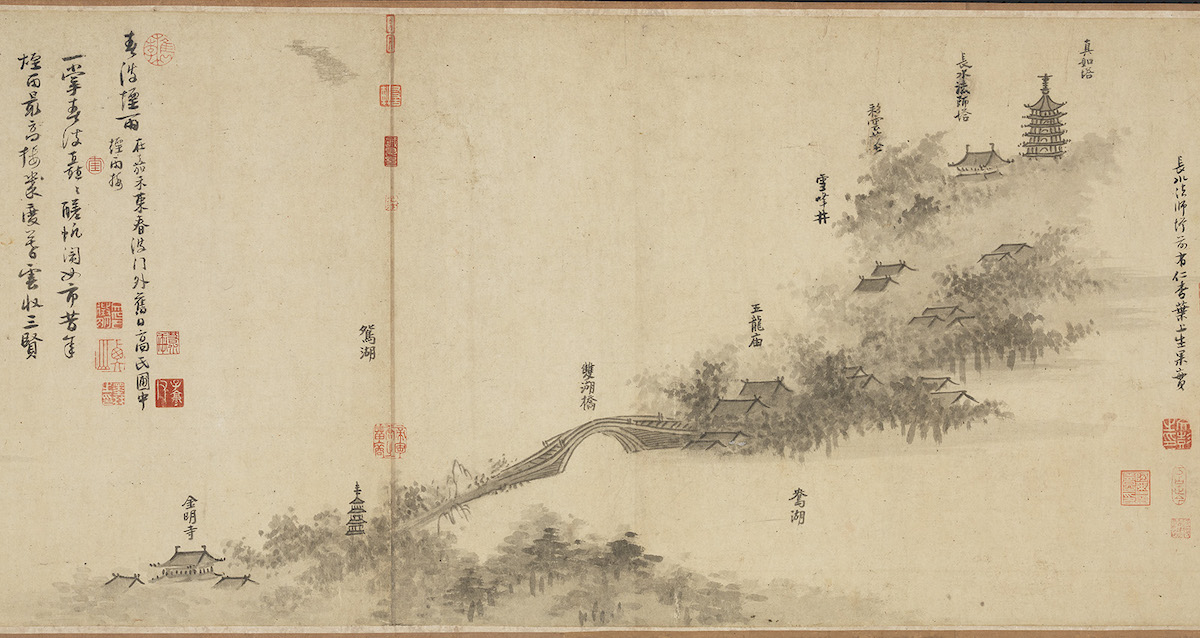
Eight Scenic Spots of Jiahe in Yuanwu Town (Part)

Eight Scenic Spots of Jiahe in Yuanwu Town (Part)
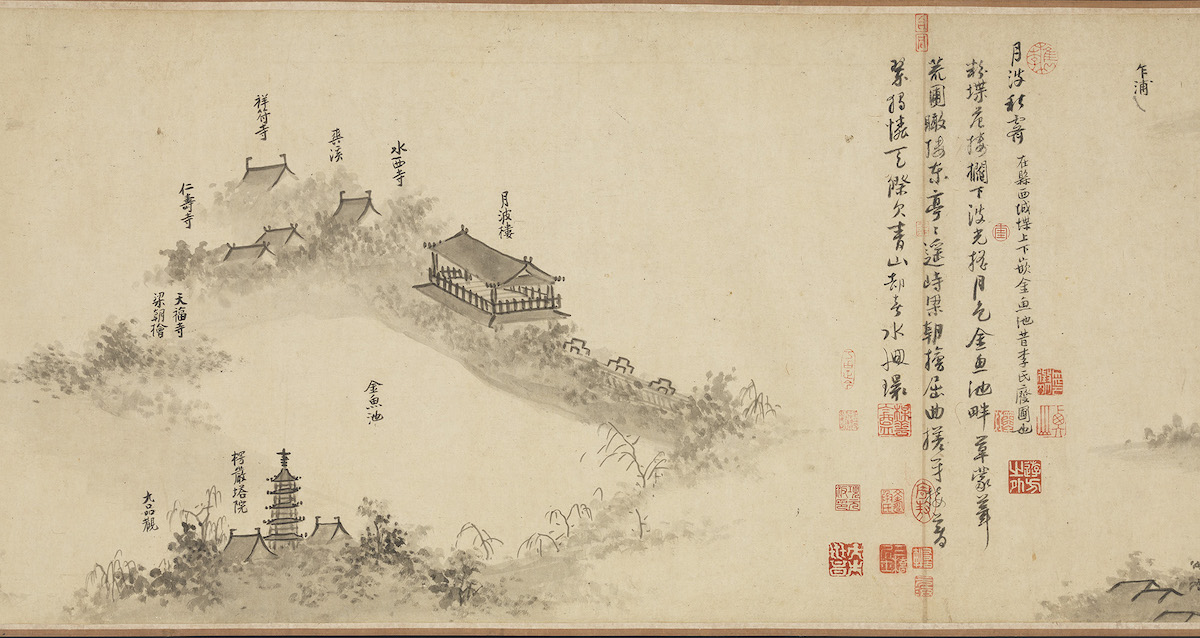
Eight Scenic Spots of Jiahe in Yuanwu Town (Part)
Wu Zhen (1280-1354), courtesy name Zhonggui, also known as Meihua Taoist, was a native of Jiaxing, Zhejiang. He was good at using ink, and together with Huang Gongwang (1269-1354), Ni Zan (1301-1374), and Wang Meng (1308-1385), they were known as the Four Masters of Yuan Dynasty.
This painting was painted in the fourth year of Zhizheng (1344). It follows the example of the "Eight Scenes of Xiaoxiang" in the Northern Song Dynasty and depicts eight scenic spots in Jiaxing (also known as Jiahe). The locations in the painting are all marked with text, and blank spaces are used to connect the points, and their relative positions are used to arrange the composition. The brushwork is sparse and the ink is full of interest, presenting a distant and ethereal scenery.
flower and bird painting
Song people painted snow reeds and two wild geese
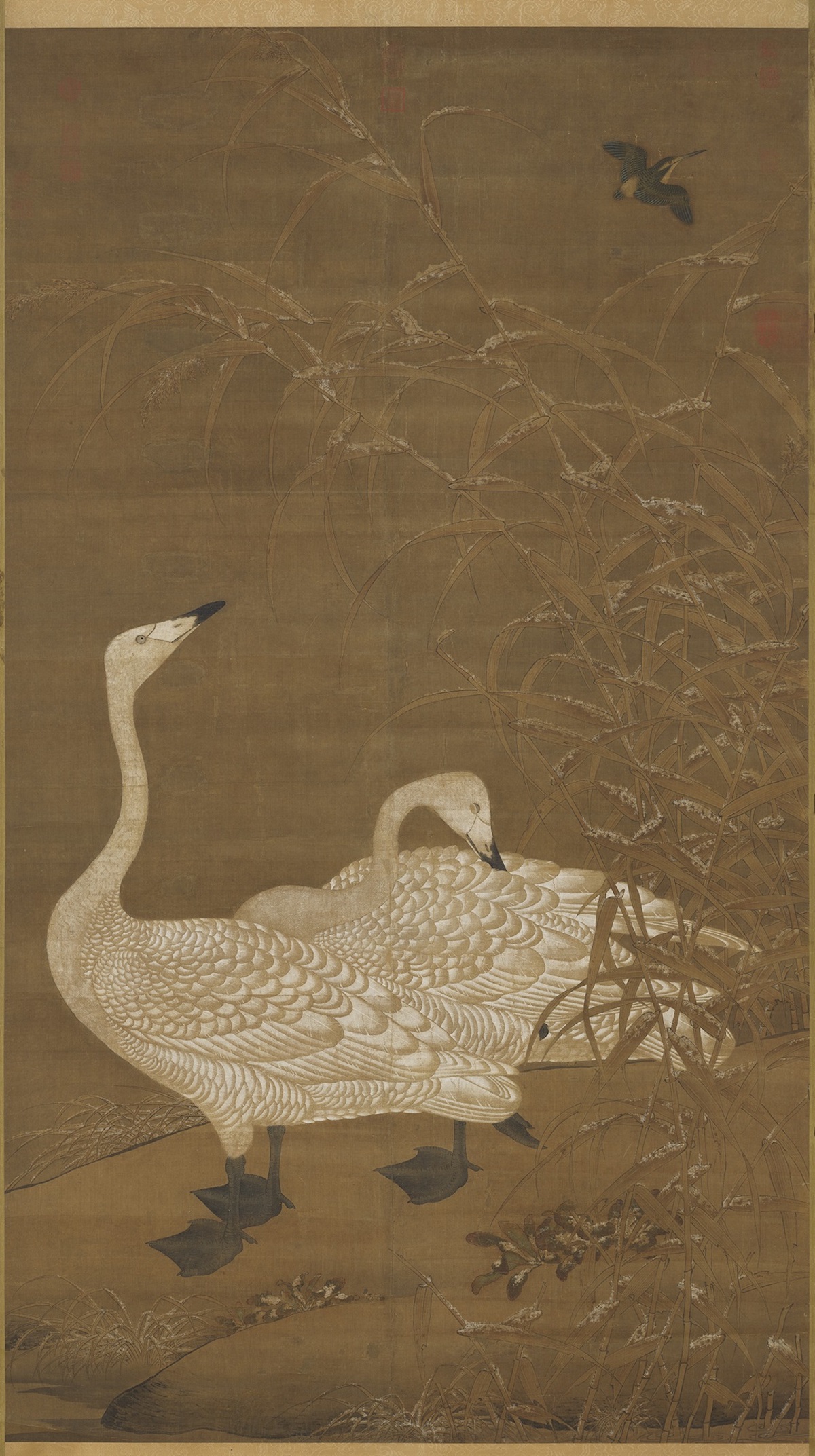
Song people painted snow reeds and two wild geese
White swans are perched among the reeds, one is preening its feathers leisurely, and the other is gazing at the distant kingfisher. There are no obvious cracks on the slope bank, and the areas where the reeds are covered with snow are not only stained and left empty, but also powdered to give a realistic look of frost and snow. Since the late Northern Song Dynasty, such geese and wild geese have often been paired with autumn scenery and cold forests, as a metaphor for the desolation and bitter cold that does not change the love. The artist accurately depicts the appearance of the swan and carefully outlines the bird's feathers. The shape, size proportions and layers of each part from the head and neck to the shoulder feathers, minor coverts, back and large coverts, wing strips, flight feathers, tail feathers, etc. are all faithfully depicted. The colors are pure and honest, the shapes are elegant and realistic, and the expressions are vivid and lifelike, showing the artist's insight into observing nature deeply. It is a masterpiece of flower-and-bird painting handed down from generation to generation.
Song Dynasty mulberry branch yellow bird national treasure
The painting depicts an oriole on a mulberry branch, raising its head to eat mulberries. The composition is simple, but it reflects the fleeting scene captured after in-depth observation. No matter the trees or birds, they are all painted with clear colors, and the lines drawn based on the objects are extremely vivid and natural. Smooth feathers mostly have well-proportioned lines and smooth outlines, while silky feathers are thin and straight. The unevenness of the branches and the jagged edges of the mulberry leaves are clearly undulating and turning. This concept and technique of using brushes is in line with the sketching concept of the Xuanhe period of Song Huizong (1100-1125). The painting also bears the seal of "Xuanhe", which should be a work from the Painting Academy.
Flowers with color by Chen Chun of Ming Dynasty

Flowers with color by Chen Chun of Ming Dynasty
Chen Chun (1483-1544) was born in Changzhou, Jiangsu (now Suzhou). The courtesy name is Daofu and the name is Baiyangshanren. He once studied painting with Wen Zhengming (1470-1559) and was highly praised.
The brushwork and colors used in this painting are extremely delicate, depicting a scene of blooming flowers blooming in the summer season. Behind the lake rocks, many flowers bloom, including gardenia, rose, lily, dianthus, and red peony. Flowers are depicted using boneless brushwork, while white flowers such as gardenias and lilies are represented using dotted leaves. The colors are gentle and elegant, and the painting depicts a garden with lush flowers and plants, giving it a cozy and cozy feeling.
Qing Chuanxi sketches

Qing Chuanxi sketches

Qing Chuanxi sketches

Qing Chuanxi sketches
Chuanqi (1626-1705), a native of Bada Mountain, whose common surname was Zhu, also known as Da, lived in Nanchang, Jiangxi, and was a member of the royal family of the Ming Dynasty. After the death of Ming Dynasty, he shaved his hair and became a monk. He was good at poetry and calligraphy.
According to the date of Jihai (1659), the last painting in this volume, this is a work made when the author was thirty-four years old. He used ink to paint vegetables, flowers, fruits, strange rocks, etc. The ink colors of each painting are richly varied and the writing is quick. , the composition is peculiar. Although the influence of Ming Dynasty's sketches has been retained, unconventional tailoring has emerged, and there is no deliberate pursuit of complete objects. This reflects the painter's unique personality and also foreshadows future development.
figure painting
Picture of Horse Herding by Han Gan in Tang Dynasty National Treasure
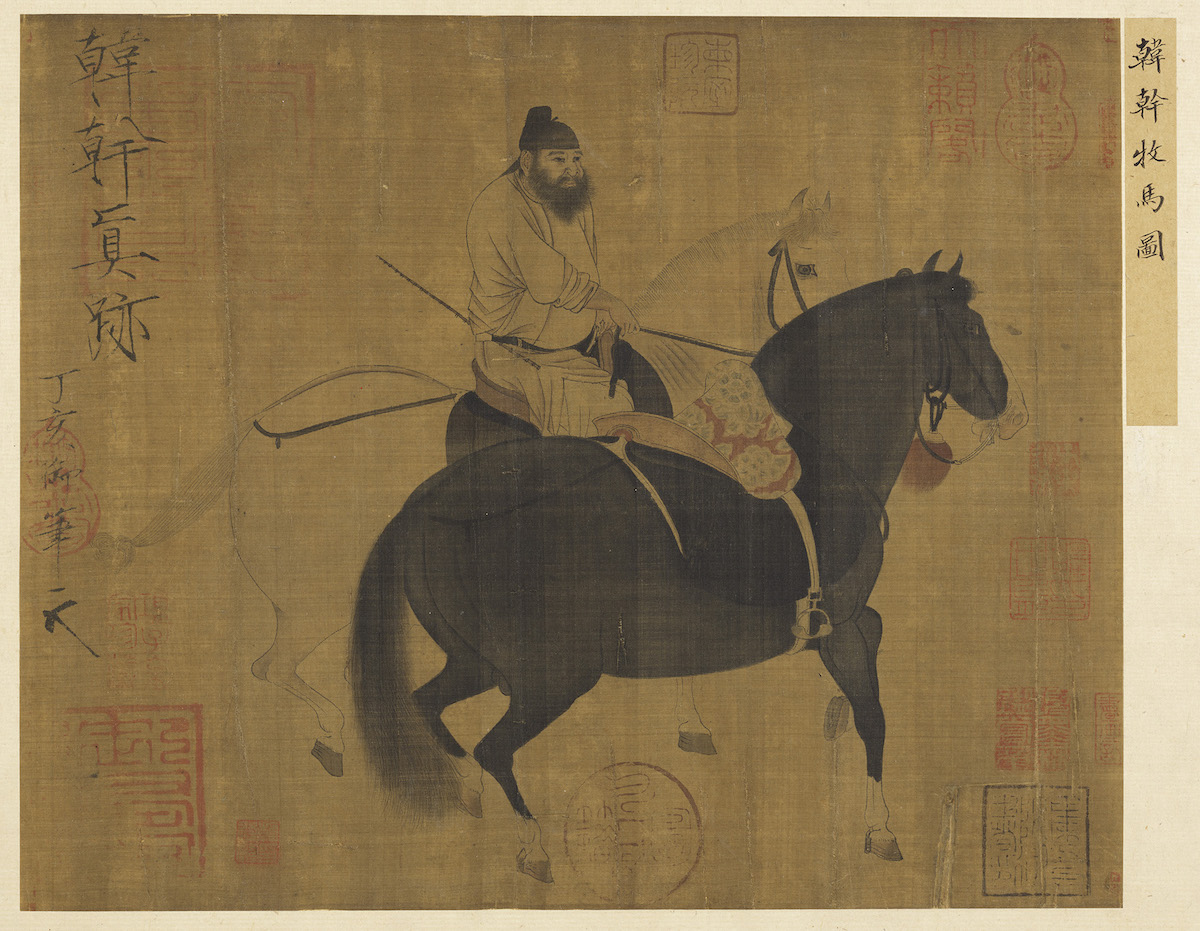
Picture of Horse Herding by Han Gan in Tang Dynasty National Treasure
In this painting, Xiguan (who is responsible for raising horses) is riding a white horse, and he is leading a black horse and riding the bridle. There is an inscription by Emperor Huizong of the Song Dynasty (1082-1135), "Authentic work of Han Qian, written by Ding Hai". Han Gan was a famous horse painter during the reign of Emperor Xuanzong of Tang Dynasty (reigned 712-756). The appearance of the official Xi, the round buttocks and short legs of the horse all show that it is similar to the murals in the tombs of the Tang Dynasty, and has the characteristics of the era of majesty and fatness. However, the delicate and vigorous lines of the painting, the continuous brushwork of square folds, and the colors of the brocade pads on the saddle all belong to the style of the Huizong period, so it should be a masterpiece of ancient imitation in the late Northern Song Dynasty.
Picture of Zhao Qian's first snow trip during the Southern Tang Dynasty in the Five Dynasties

A picture of the early snow on Zhao Qianjiang’s trip to the Southern Tang Dynasty in the Five Dynasties (detail)
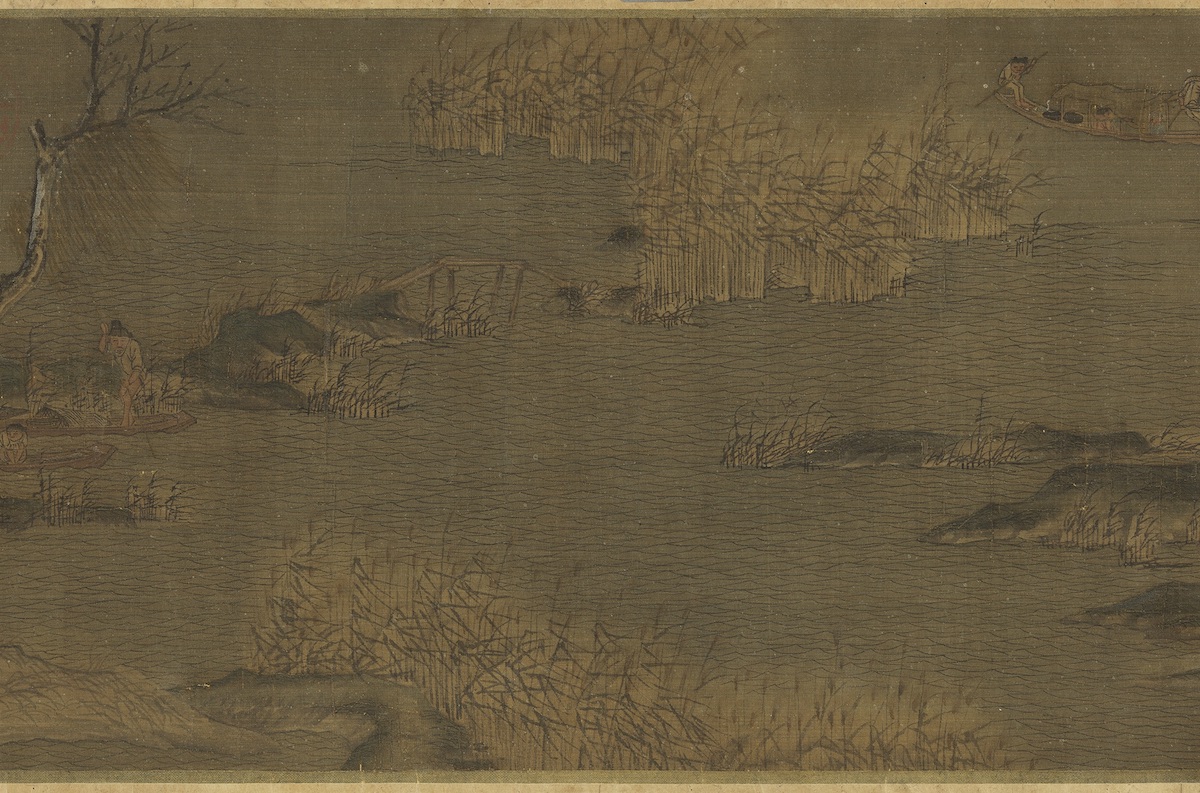
A picture of the early snow on Zhao Qianjiang’s trip to the Southern Tang Dynasty in the Five Dynasties (detail)

A picture of the early snow on Zhao Qianjiang’s trip to the Southern Tang Dynasty in the Five Dynasties (detail)
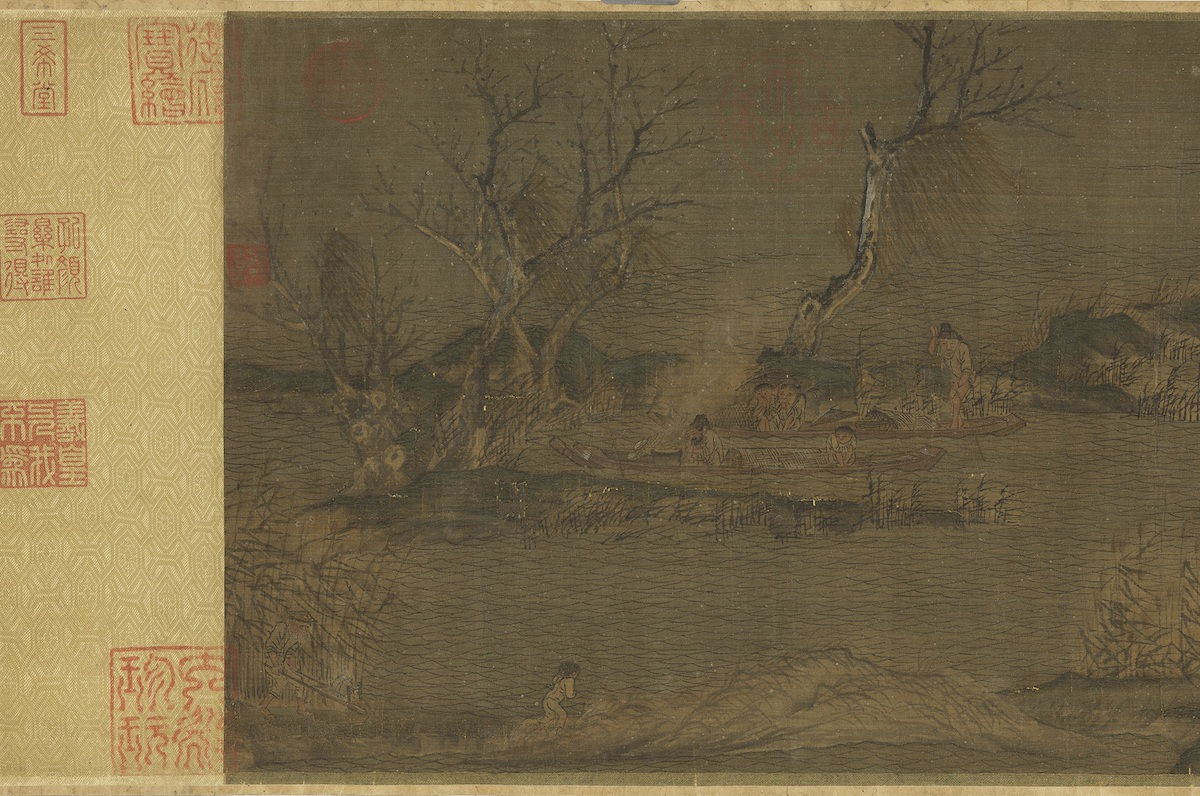
A picture of the early snow on Zhao Qianjiang’s trip to the Southern Tang Dynasty in the Five Dynasties (detail)
Zhao Qian (around the late 10th century) was a native of Jiangning, Jiangsu Province. He worked at the Painting Academy of the Southern Tang Dynasty. The first inscription is "Jiang Xingchu, a student of the Southern Tang Dynasty, Zhao Qianzhuang". It is said that it was written by the later master Li Yu (937-978).
The entire canvas is stained with light ink stains on the silk ground, and then sprinkled with white powder to turn into snow. The dead trees in the cold forest are straightened with strong pens, and the tree trunks are dyed with dry pens, creating a yin and yang effect. The hills and the foot of the slope are painted in blocks with light ink, and there is no specific rubbing method. Traveling by the river in winter and fishermen's life are the themes of this volume. The artist not only accurately depicts various fishermen and fishing methods in the picture, but also combines details such as the cowering boy and the donkey walking against the wind to create a Quite a immersive visual effect.
Picture of Liu Yin, a scholar from the Song Dynasty

Picture of Liu Yin, a scholar from the Song Dynasty
Under the shade of a willow tree, a noble scholar sat bare-chested and bare-backed on a leopard skin, with a drunken look in his eyes, free and unrestrained. Tao Yuanming (365-427) once described himself in the "Biography of Mr. Wuliu". Coupled with the characteristics of the utensils and clothing, it can be inferred that this person is Tao Qian. The lines of the characters are as strong as iron wire, with sharp turns. The tree trunks are old, the willow leaves are complex, the brushwork is steady and straight, and the multiple layers of dyeing make the painting rich and moist. In terms of layout, brushwork, and coloring, they are all superb. It is a masterpiece of figure painting.
Ming Qiu Ying Han Palace Chunxiao National Treasure
Qiu Ying (about 1494-1552), whose courtesy name was Shifu and his nickname was Shizhou. His works are of the essence of the Academy of Painting and have high morale, and he is one of the four great masters of the Ming Dynasty.
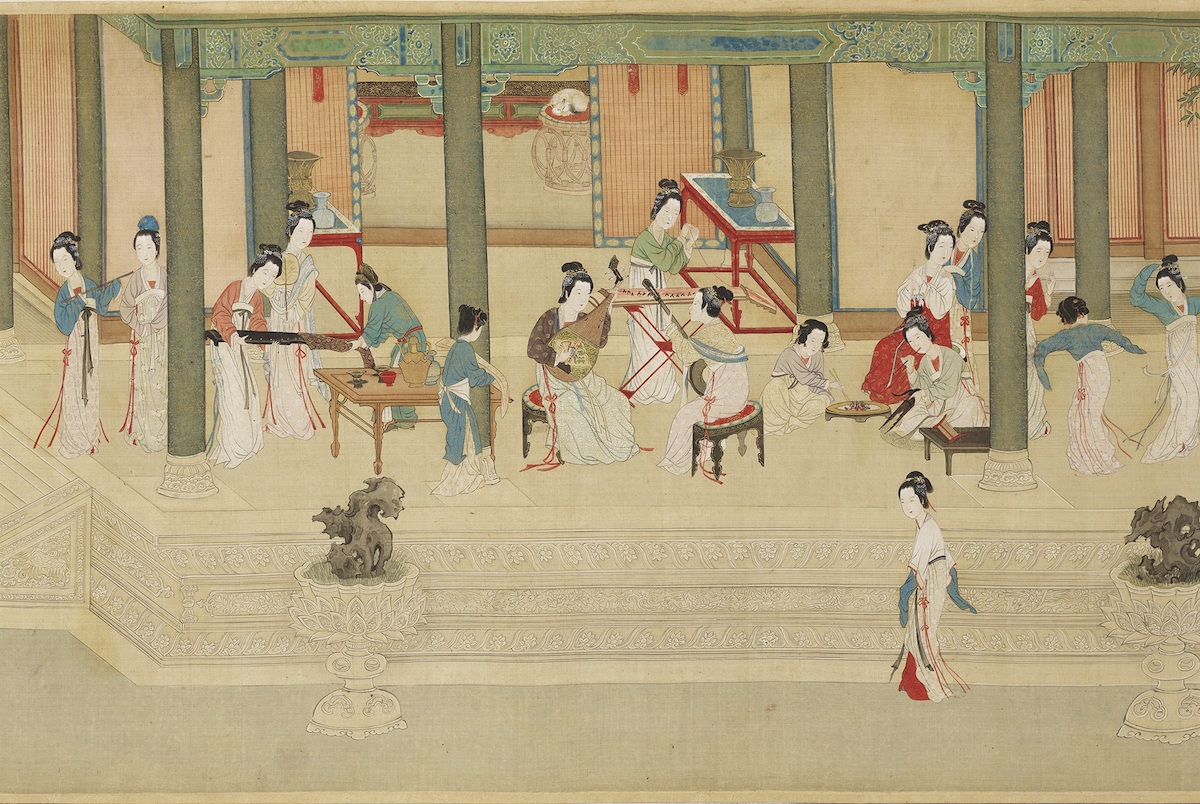
Ming Dynasty Qiu Yinghan Palace Chunxiao National Treasure (Part)
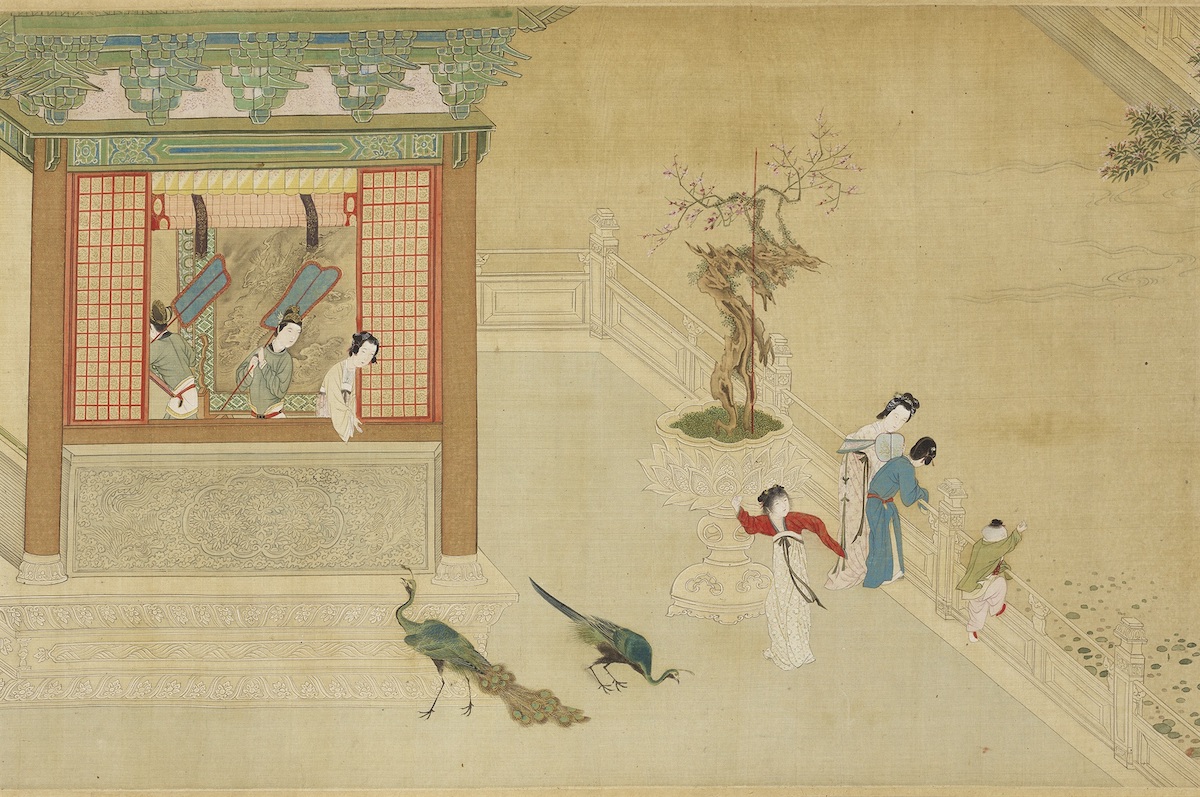
Ming Dynasty Qiu Yinghan Palace Chunxiao National Treasure (Part)
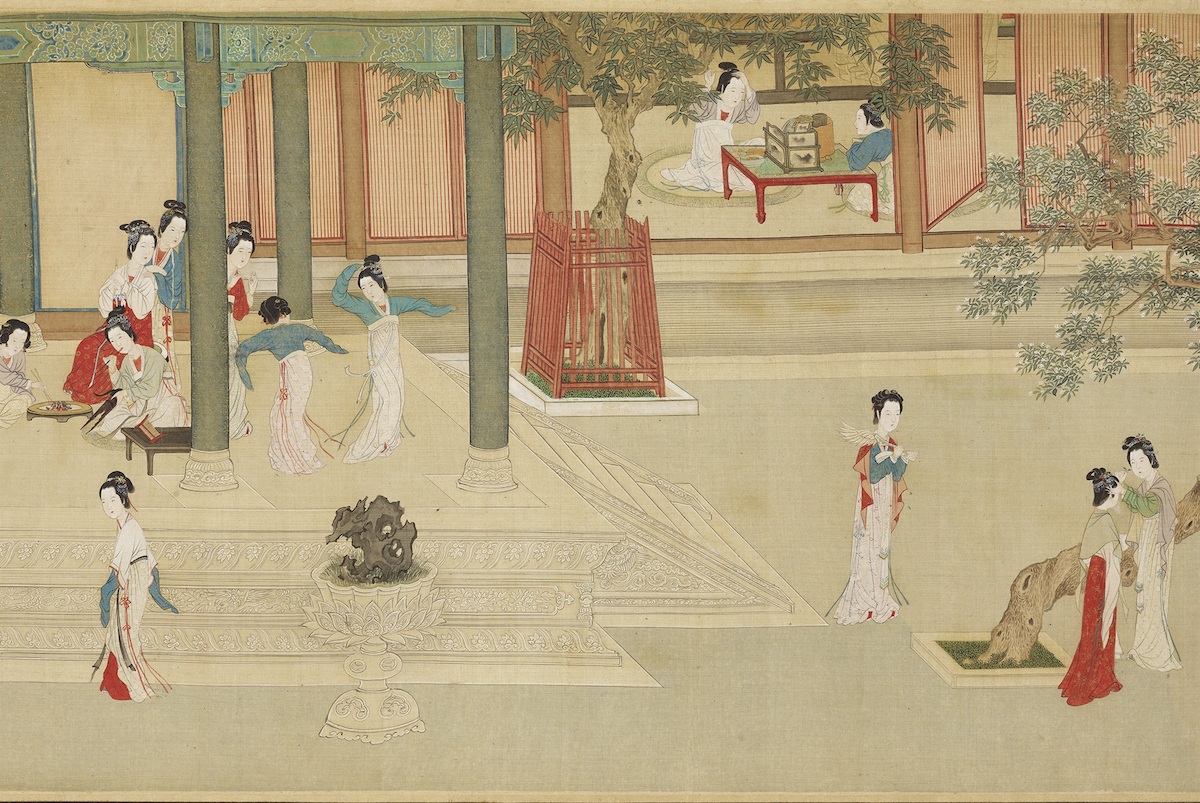
Ming Dynasty Qiu Yinghan Palace Chunxiao National Treasure (Part)

Ming Dynasty Qiu Yinghan Palace Chunxiao National Treasure (Part)
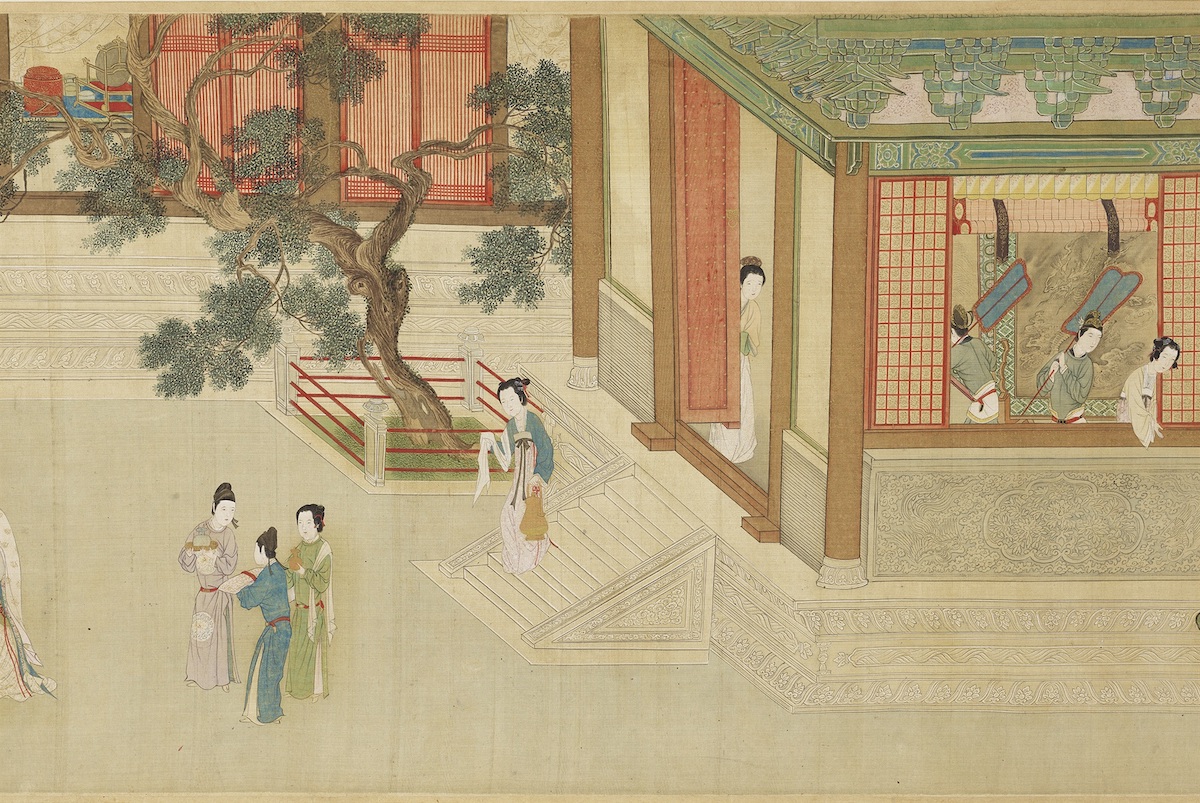
Ming Dynasty Qiu Yinghan Palace Chunxiao National Treasure (Part)
This painting uses the Han Dynasty palace in the spring morning as the background, depicting beauties in various forms, and interspersed with Mao Yanshou's portrait of Wang Zhaojun. The composition of the whole painting is complex, and the brushstrokes are fresh and vigorous, and the colors are elegant. The trees and rocks and the gorgeous palaces complement each other, creating a magnificent scene like a fairyland. In addition to the group portraits of beauties, it also incorporates literati leisure activities such as music, chess, calligraphy and painting, antiquity appreciation, and flower growing. It is truly a wonderful masterpiece of Qiu Ying's historical story painting.
Sixteen Views of Chen Hongshou's Paintings in Seclusion in the Ming Dynasty

Sixteen Views of Seclusion in Paintings by Chen Hongshou in the Ming Dynasty (Partial)
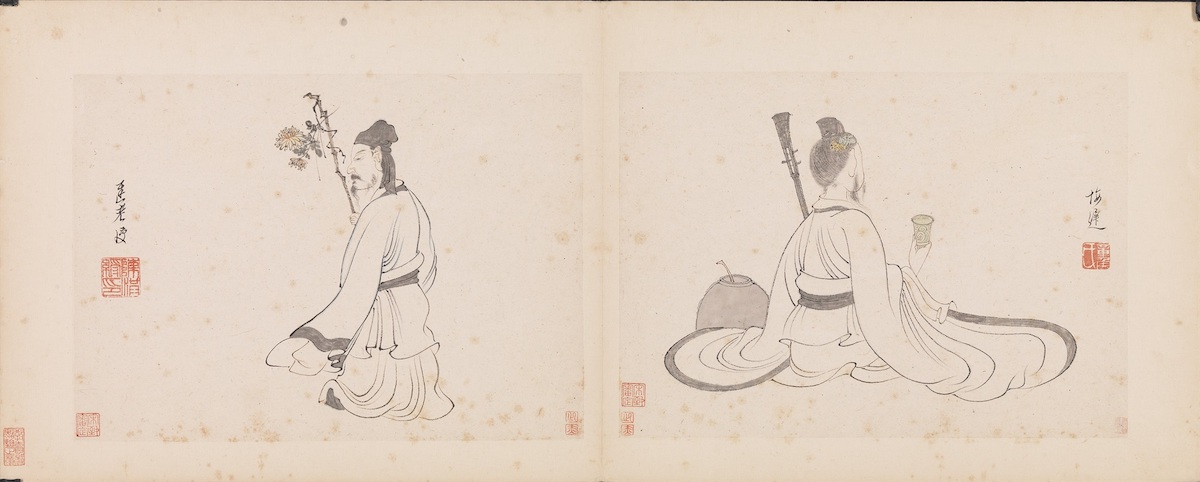
Sixteen Views of Seclusion in Paintings by Chen Hongshou in the Ming Dynasty (Partial)

Sixteen Views of Seclusion in Paintings by Chen Hongshou in the Ming Dynasty (Partial)

Sixteen Views of Seclusion in Paintings by Chen Hongshou in the Ming Dynasty (Partial)
Chen Hongshou (1598-1652) was a native of Zhuji, Zhejiang. The courtesy name is Zhanghou and the nickname is Laolian. After Jiashen (1644), he said that he regretted being too late, but also said that it should not be too late. The characters, flowers, birds, grass and insects are all exquisite, and they can all come up with their own ideas.
Sixteen views on living in seclusion, the story is inexhaustible, and the sixteen things in the life of a hermit can be included in the painting. Some of the themes are borrowed from ancient masters, and some may be based on Lao Lian's real life experience, and the freehand brushwork is used to express feelings. According to the inscription, it was painted by Lao Lian when he was fifty-four years old. It was a work made a year before his death. Regardless of creativity, composition, and color, it is a masterpiece of his later years.
(Information for this article comes from the official website of the National Palace Museum in Taipei)
